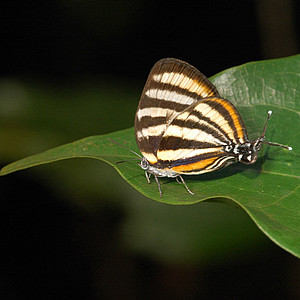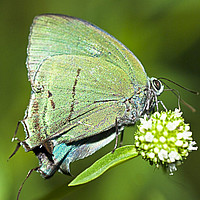Lycaenidae

Lycaenidae “Hairstreaks” is a large family of species (30-40% of the butterfly fauna), occurring in all major biogeographic regions. Few species are widely distributed and most occur in the Tropics (New 1993). About 1182 neotropic species are distributed in the subfamily Theclinae, Lycaeninae and Polyommatinae (Lamas 2004).
In defense against predators in a few species occur mimicry, in another defense includes chemistry defense, with examples of aposematic species (New 1993). In Theclinae many species have a 'false head' at the tail of posterior wing, with movements that actively simulate antennas. This movements could to divert the predator to a region less vulnerable (see Robbins, 1981).
In about a quarter of the species the larvae are dependent on ants that tend to protect the caterpillars from natural enemies. On the orden hand feed on secretions produced by the caterpillars. Among the various species are observed at different levels of complexity in these interactions (New 1993).
Besides the mutualistics associations, numerous examples of other interesting ecological interactions occur in this family, especially the aphytophagy - regular oder obligate. For this theme could be consulted Cottrell, 1984.
Although a large number of associations are described, there is few knowledge about the biology of Lycaenidae in the tropics.




